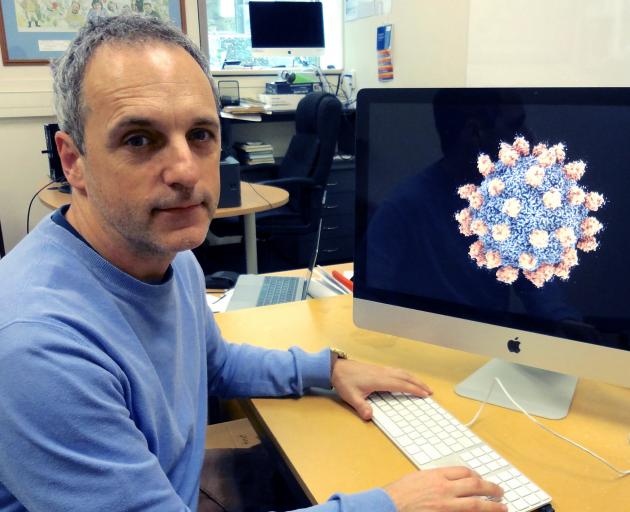
Researchers from the University of Otago have been working with a potentially life-saving virus that targets cancer cells while leaving normal healthy tissue alone.
The researchers have used high-resolution electron microscopy images to reveal how an anti-cancer virus interacts with tumour cells, increasing its potential to save lives.
Seneca Valley Virus (SVV), a newly-discovered virus which infects cancer cells but not normal tissue, is one of the main research project's in the laboratory of OMNI Electron Microscopy unit academic director and Department of Microbiology and Immunology senior lecturer Dr Mihnea Bostina.
Dr Bostina hoped the results from this latest study, published in PNAS Latest Articles, would help to develop the virus for clinical use. The research demonstrates how SVV discriminates between cancer cells and other similar proteins.
“We can see exactly how the virus breaks into the cancer cells, while leaving other cells untouched,” Dr Bostina said.
“This structure teaches us which part of the virus is essential for binding to the receptor and which is not.
"If we want to make the virus more efficient at invading cancer cells, we can leave intact the part that interacts with the cancer cells and modify the rest so the virus can escape the attack of the immune system,” Dr Bostina said.
Working with researchers from Japan’s Okinawa Institute of Science and Technology, the Otago researchers used cryo-electron microscopy to capture thousands of images of the virus bound to its receptor, using them to reconstruct a high resolution structure of the complex.
The receptor, a protein called ANTXR1, was found on tumours, but it has a cousin, ANTXR2, which only appeared on healthy tissues.
SVV did not bind with the similar receptor on healthy cells – it only showed strong affinity for ANTXR1. SVV's cancer-fighting abilities have been demonstrated in clinical trials, but there is one problem – the body builds up immunity to the virus within a couple of weeks.
Lead author and Otago PhD candidate Nadishka Jayawardena said he had “always been intrigued” by how naturally occurring micro-organisms can be used for human benefit.
“Being able to work on a virus that can kill cancers is very rewarding, especially knowing that one day our findings could potentially lead to tackling a major global health issue,” he says.